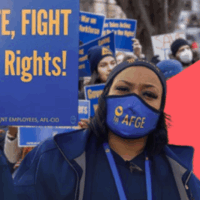New York, NY—Home health care jobs top the list of the nation’s fastest-growing jobs, but they’re also among the lowest paid and plagued by poor working conditions, high turnover, and abusive practices such as wage theft.
But workers who seek redress for labor violations often struggle to find anyone to hold accountable because of a fundamental structural weakness in the home care industry—the pervasive outsourcing of employer functions and responsibility. That, combined with the lack of meaningful controls on home care funds and poor enforcement, thwarts workers’ ability to assert their rights, according to a report released today by the National Employment Law Project.
“Major changes are necessary to hold home care industry players responsible both for compliance with workplace laws and the quality of home care jobs,” said Sarah Leberstein, NELP senior staff attorney and report co-author. “Given its power in the marketplace, the public sector must lead by increasing its investment in home care services to create quality jobs, and by attaching strong job quality standards to public funding to ensure that labor standards are respected and more of the money actually flows to workers’ wages rather than industry profits.”
Eighty-three percent of home care services are funded by public programs, with the largest share paid by Medicaid. Federal and state governments have largely outsourced service provision to private actors, often via multi-layered outsourcing arrangements, with little oversight of compliance with basic labor standards. Without robust controls and wage standards, private home care agencies may use a disproportionate share of public funds for overhead and profits rather than workers’ wages and benefits, according to the report.
“At a time when the demand for quality home care is skyrocketing, addressing the structural and policy gaps that permeate the industry will be essential to making home care an option for all,” said Irene Tung, NELP senior policy researcher and co-author. “A crucial first step to improving conditions for home care workers is establishing clear accountability within subcontracted work structures.”
Few home care workers have a traditional employment relationship with one single employer entity. Rather, workers may relate to multiple parties (e.g., federal and state offices, private home care agencies, “fiscal intermediaries,” “public authorities,” managed care organizations, and the consumer) as they carry out their jobs. These “fissured” and outsourced industry structures have frustrated workers’ efforts to hold violators accountable for wage theft and other labor abuses, and threaten recent worker advancements such as federal minimum wage and overtime protections.
The report offers a detailed examination of the myriad home care structures that exist through public and private pay, in agency and consumer-directed models, and in relation to federal and state governments and consumers. These insights into one of the fastest-growing industries help to explain the root of the problem and lay the groundwork for thoughtful legislative and regulatory responses. The report outlines policy solutions that federal, state, and local governments and responsible employers can adopt.
“Despite the fissured structures in home care, there are policy solutions that can both promote quality jobs and quality care,” said Caitlin Connolly, NELP home care fair pay campaign coordinator and report co-author. “Labor violations that have plagued this industry, contributing to massive turnover rates and harm to workers and their families, can and must be stopped.”
###



